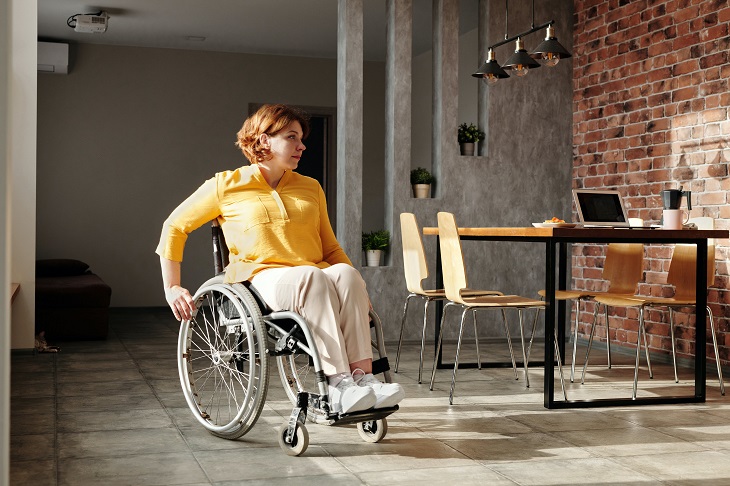Independence is a fundamental aspect of human life that is an inherent aspect of daily existence, many times taken for granted until faced with mobility challenges. Whether it’s due to disability, injury, or aging, navigating the world with limited mobility presents unique obstacles. Yet, overcoming these challenges is not insurmountable.
In this comprehensive guide, we provide practical tips for independent mobility to empower individuals to reclaim their independence in mobility. From navigating the intricacies of handicapped driving to exploring accessible transportation alternatives, we’ll cover a range of solutions to empower individuals to navigate the world with confidence.
Understanding Mobility Challenges
The multifaceted nature of mobility challenges underscores the complexity and diversity of barriers individuals face in their quest for independent movement. At its core, mobility challenges encompass a wide spectrum of impediments, ranging from physical disabilities and injuries to age-related limitations. Each individual’s experience is unique, shaped by factors such as the severity of their condition, available support systems, and environmental accessibility.
For some, mobility challenges may manifest as difficulty walking or standing for extended periods, while others may struggle with motor coordination or balance issues. Moreover, the impact of mobility challenges extends beyond physical limitations, affecting individuals’ emotional well-being, social interactions, and overall quality of life. Navigating everyday tasks, such as transportation, employment, and recreation, becomes a formidable task, compounded by societal barriers and inadequate infrastructure.
Recognizing the multifaceted nature of mobility challenges is essential in applying solutions that address the diverse needs of individuals with disabilities. By adopting a holistic approach that considers physical, social, and environmental factors, we can create a more accessible and equitable world where everyone has the opportunity to live and move independently.
Let’s proceed with a few tips for overcoming these challenges when it comes to handicapped driving and accessible transportation options.
Handicap Driving Tips
For individuals grappling with mobility challenges, the ability to drive is not merely about reaching a destination—it embodies a profound sense of liberation and self-reliance. Yet, for many, the prospect of navigating the complexities of the road with a disability can be daunting. It requires a unique blend of specialized knowledge, adaptive techniques, and innovative solutions. Let’s discuss a range of indispensable handicap-driving tips to facilitate and help with your independent mobility:
- Vehicle Modifications: Invest in vehicle modifications tailored to your specific needs. From hand controls to wheelchair ramps, individuals can customize vehicles to enhance accessibility and comfort, ensuring a seamless driving experience.
- Driver Rehabilitation Programs: Enroll in driver rehabilitation programs designed for individuals with disabilities. These programs offer specialized training and equipment, equipping you with the skills and confidence to navigate the road safely.
- Knowledge of Regulations: Familiarize yourself with the legal framework governing disability parking permits, vehicle modifications, and driving privileges. Understanding your rights empowers you to advocate for necessary accommodations and access essential resources.
- Regular Maintenance: Prioritize regular maintenance checks to uphold your vehicle’s optimal performance and safety. Taking a proactive step to upkeep your vehicle minimizes the risk of breakdowns, ensuring that it remains reliable and accessible at all times.
Accessible Transportation Options
Beyond individualized mobility solutions, a plethora of accessible transportation alternatives cater to diverse needs. From public transit to ride-sharing services, exploring these options expands mobility possibilities for individuals with disabilities. Here are a few:
- Public Transit: Many urban centers offer accessible public transit services equipped with features like wheelchair ramps, priority seating, and audio announcements. Consult your local transit authority to ascertain available services and accessibility provisions.
- Ride-Sharing Services: Embrace the convenience of ride-sharing platforms like Uber and Lyft, which often provide accessible transportation options tailored to individuals with disabilities. These services facilitate on-demand travel, allowing you to request vehicles equipped with wheelchair ramps or other mobility aids.
- Paratransit Services: Paratransit services cater to individuals unable to utilize conventional public transit due to disabilities. Characterized by door-to-door transportation and advanced registration requirements, these services ensure seamless mobility for eligible individuals.
- Community Transportation Programs: Community-driven initiatives offer tailored transportation solutions for seniors and individuals with disabilities. From door-to-door shuttle services to subsidized taxi programs, these initiatives foster inclusivity and independence within local communities.
Navigate with Mobility Challenges
We hope these tips for independent mobility help you navigate mobility challenges. By implementing the strategies outlined in this guide, individuals with disabilities can transcend physical limitations and reclaim their independence.
Whether it is through personalized handicap driving tips or embracing accessible transportation alternatives, the path to autonomy is within reach. Let us champion accessibility, advocate for inclusivity, and pave the way toward a more equitable society where every individual can thrive independently.
Featured image by Annie Spratt on Unsplash.



